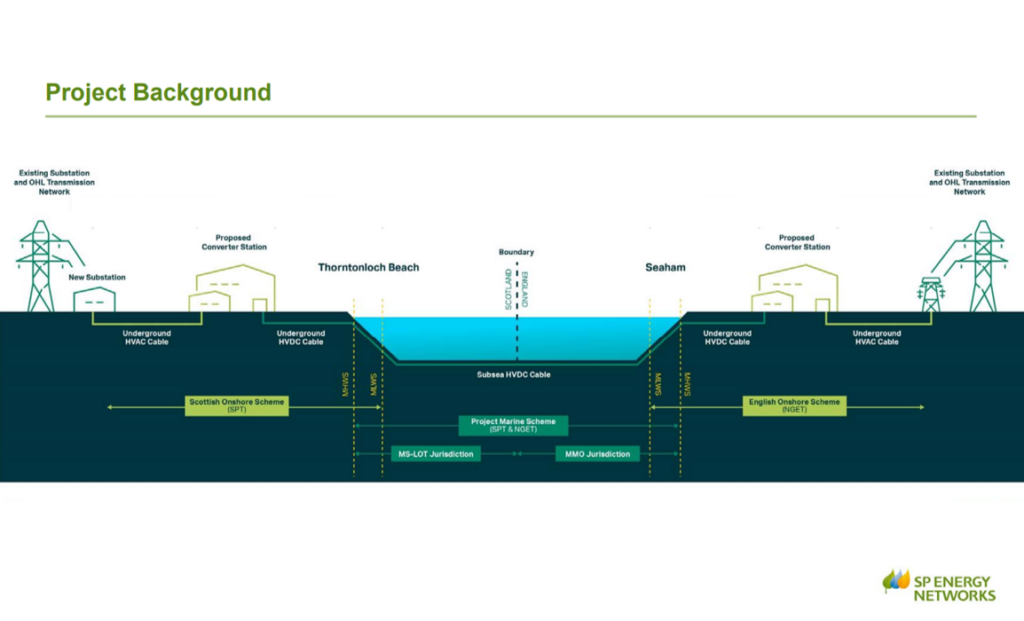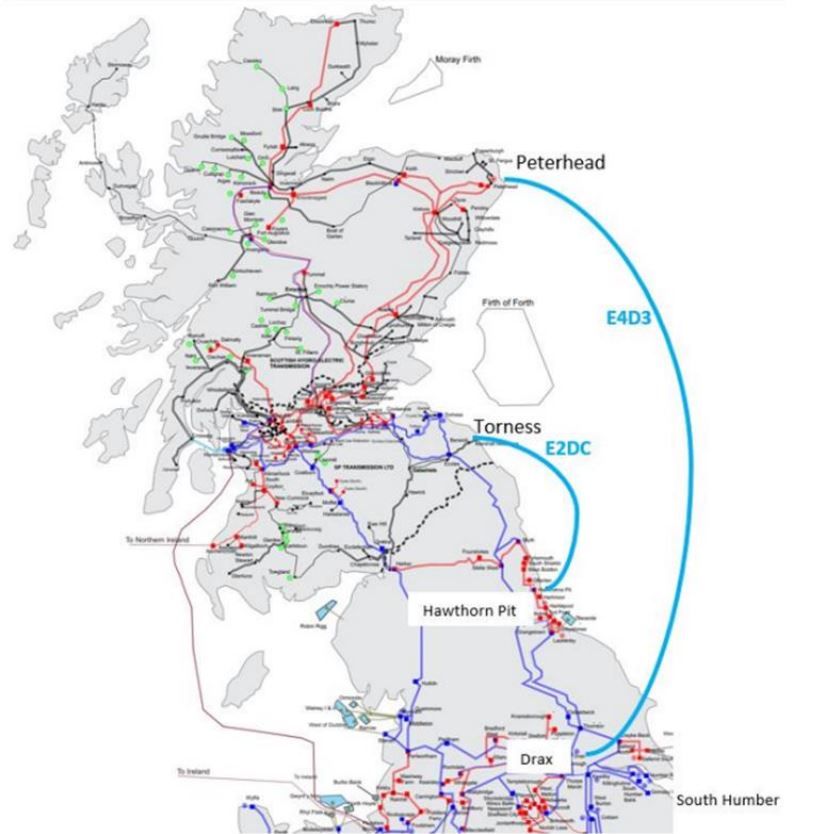The UK is a world leader in offshore wind energy and has a target to become net zero in all greenhouse gas emissions by 2050 for England and Wales, and 2045 for Scotland.
As the country shifts away from traditional forms of fuel to heat homes, charge vehicles and power businesses, there will be a greater need for green electricity. By the end of this decade, the UK Government aims for every home in the country to be powered by offshore wind.
To help deliver more green energy to homes and businesses across the UK, the National Grid needs to increase the capability of their network between Scotland – with its many renewable energy sources – and the rest of the UK.
To do this, the National Grid has submitted planning applications to construct two new High Voltage Direct Current (HVDC) electrical ‘superhighways’; one from the Torness area in East Lothian, to Hawthorn Pit, between Murton and South Hetton, in County Durham (SEGL1) and one from Peterhead in Aberdeenshire to Drax in North Yorkshire (SEGL2).
The SEGL1 project (also known as the Eastern Link project) is being jointly developed with ScottishPower Energy Networks (SPEN). SPEN is the transmission owner for Central and Southern Scotland, and are developing the onshore and offshore aspects of the scheme in Scotland. SEGL2 is being jointly developed with Scottish and Southern Electricity Networks (SSEN).

Status of our project’s planning applications
There are three parts to the full consent of SEGL1: consent of the onshore elements in England; consent of the onshore elements in Scotland; and consent of the offshore elements in English and Scottish waters.
If all the project’s consent applications are approved, it is expected to begin construction in autumn 2024 and finish in 2027.
- Consent of the onshore elements in County Durham, England
Outline planning permission granted by Durham County Council for the English onshore elements of the project in November 2022.
The onshore elements include a new converter station, new substation and two hectares of public open space at Hawthorn Pit (between Murton and South Hetton), County Durham. All underground cabling works on land will be installed under our permitted development rights. You can read more about these onshore elements on the National Grid’s proposal page.
You can view the approved application and associated documents by visiting the Council’s planning portal and inputting our application’s reference number: DM/22/01663/OUT.
Looking ahead, the National Grid will need to submit detailed ‘reserved matters’ applications to provide information such as the detailed design and appearance of the converter station and substation. They expect to submit to these applications to Durham County Council for approval in winter 2023/2024.
- Consent of the onshore elements in the Torness area, Scotland
SEGL1 is being jointly developed with Scottish Power Energy Networks (SPEN), who are developing the project’s onshore elements in Scotland. A decision on their planning application was expected in spring 2023.
Current Status:
- •Eastern Link – Marine License application (awaiting decision)
- •Eastern Link – Planning application (awaiting decision)
- Tendering (Commenced)
- Consent of the offshore elements
The National grid have submitted marine licence applications to the Marine Management Organisation and Marine Scotland for SEGL1’s 176km submarine cable, the offshore element of the project. The English application can be viewed in the public register using the reference number MLA/2022/00231. Much like planning permission onshore, this process involves a period of technical appraisal and consultation which will inform the outcome of the application. We expect a decision to be made in spring 2023
Route
SEGL1 will run from Torness in Southeast Scotland to Hawthorn Pit substation in Northeast England.[5] Landfall in England will be to the North of Seaham, on the Durham Coast.[4]


Technical specification
The cable will carry 2 GW.[3] The DC voltage will be +/-525 kV, using voltage source converter (VSC) technology, carried on cross-linked polyethylene (XLPE) cables, with a fall back option of mass impregnated (MI) cables.[1]

Economic case
The investment required is £1.294 billion.[1]
Project partners
SEGL1 is being developed by Scottish Power Transmission plc (SPT) and National Grid Electricity Transmission plc (National Grid).[5]
